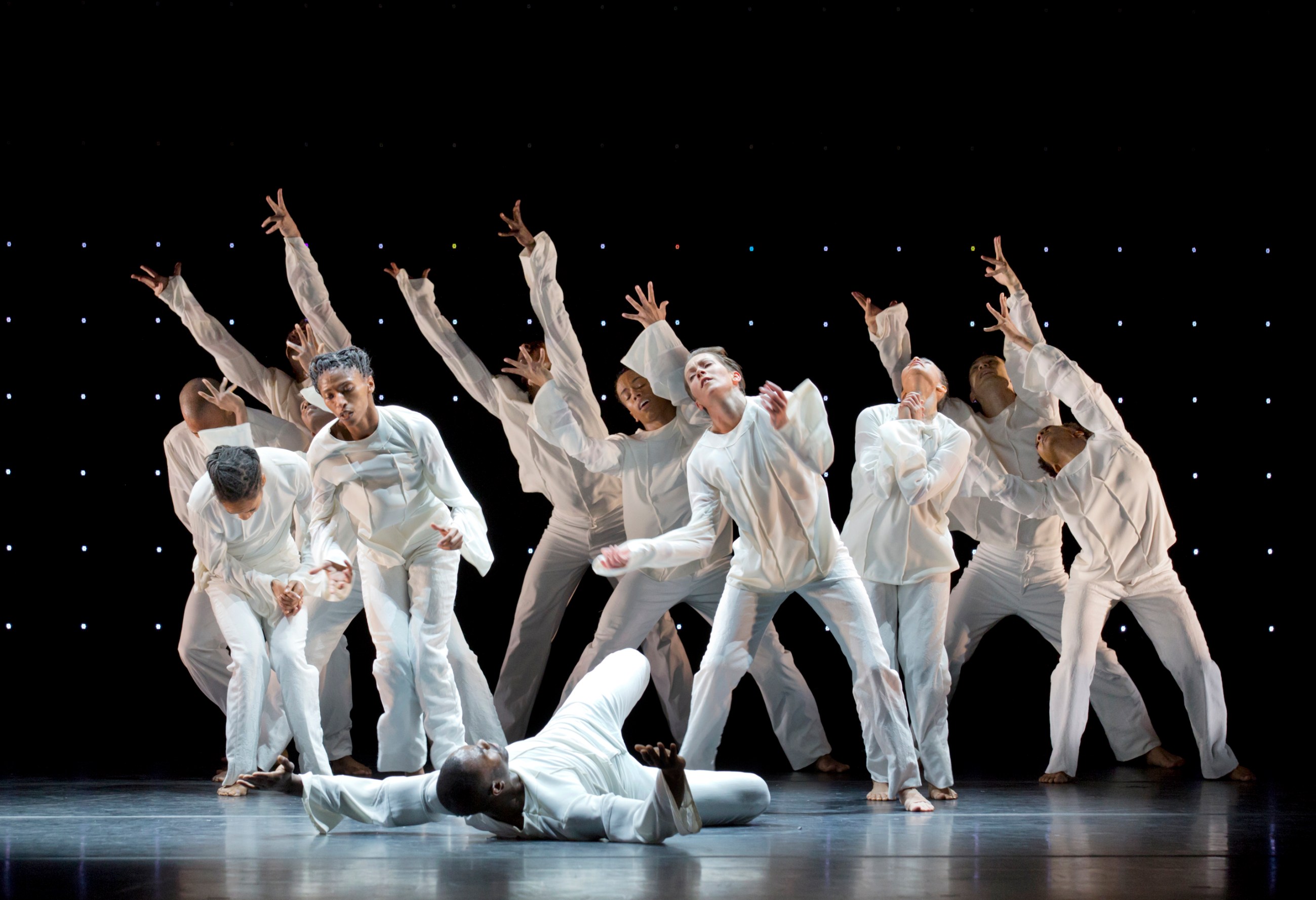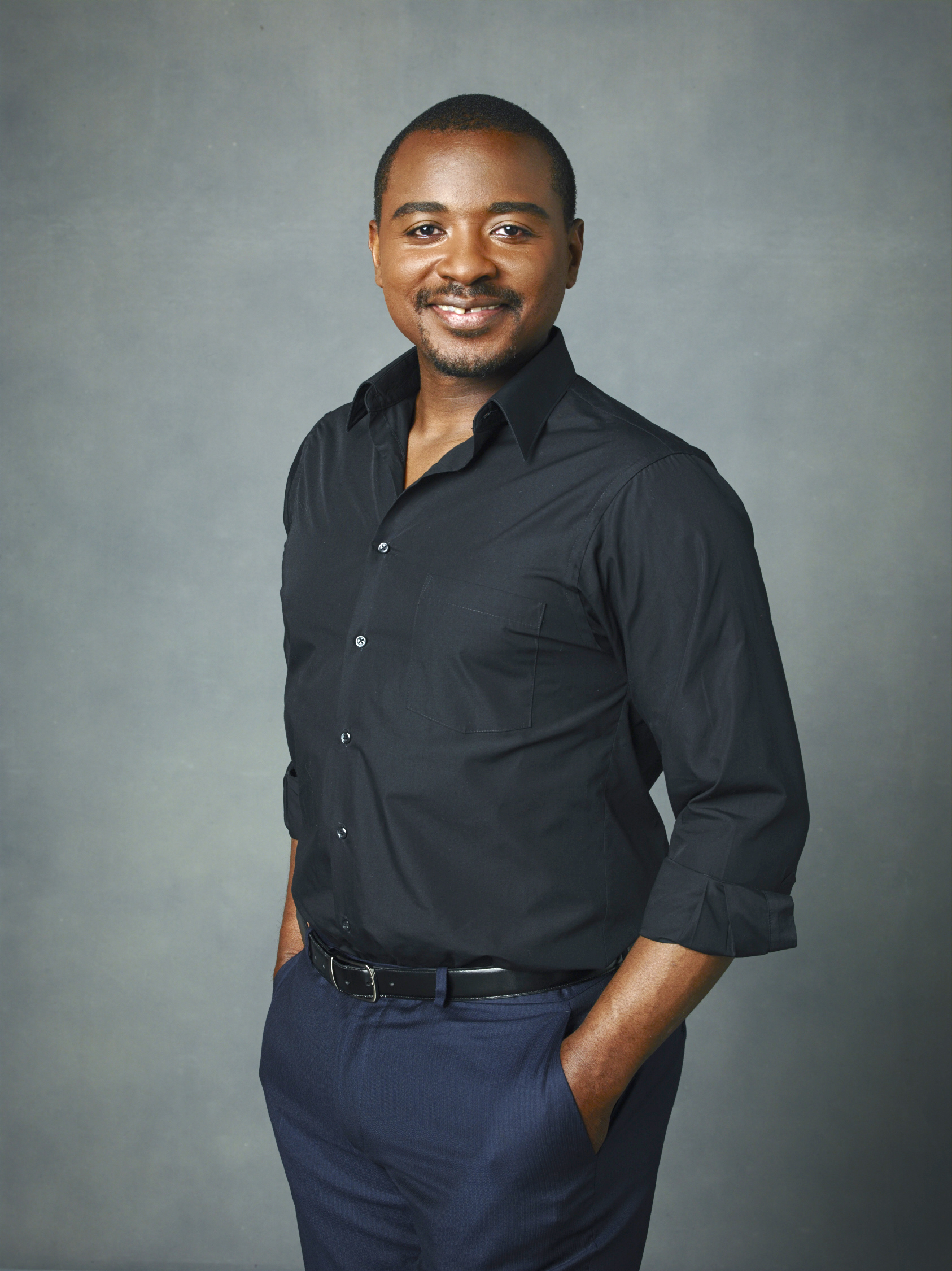
Alvin Ailey’s Robert Battle returns to Miami with new choreographic work
Above: Alvin Ailey American Dance Theater in Robert Battle’s “Awakening.” Photo by Paul Kolnik.
If you haven’t experienced Alvin Ailey American Dance Theater, it’s time. The company’s performances and community outreach programs are excellent ways to introduce your children, nieces and nephews, grandkids and the neighbors’ kids, to the splendor of Ailey. It may change their lives.
In his new book, “My Story, My Dance,” Miami native Robert Battle reveals just how important Ailey was to his career, and how it led to his current position as artistic director of Alvin Ailey American Dance Theater. As a boy, Battle wore leg braces, but overcame this challenge to pursue ballet. Ailey inspired Battle to step into his dreams regardless of the challenges ahead, and today, Battle leads one of America’s most storied dance companies.
That company is returning to Miami for a series of five performances at the Arsht Center as part of the Knight Masterworks Dance series. Taking place from Feb. 18-21, the performances will include “Revelations,” the Alvin Ailey company’s signature choreographic work, as well as the premiere of “Awakening,” Battle’s first original choreographic work since taking the helm of Alvin Ailey American Dance Theater.

Robert Battle. Photo by Andrew Eccles.
What was it like balancing your role as artistic director of Alvin Ailey American Dance Theater with choreographing “Awakening”—your first new work since assuming your current leadership position in 2011? I waited five years before I choreographed “Awakening.” The role of artistic director of the Alvin Ailey American Dance Theater, as you can imagine, is a huge, not only responsibility, but honor. Waiting five years gave me time to at least adapt to this new place in my life and in my career, so that when I went back to choreographing, I was ready to choreograph. It was almost a relief being in the studio as a choreographer again. It was like greeting an old friend being in the studio with the dancers, and I think for the dancers, it was also this rite of passage making a brand new work. It was a lot of fun, actually. It was kind of seamless in that way.
As someone who grew up in Liberty City, you must be very familiar with the racial divide that splits our city and schools into worlds of haves and have-nots. What tangible impact can art, especially dance, play in the lives of all kids growing up in the world of have-nots? I think dance has a huge role, and certainly Alvin Ailey American Dance Theater does its part in helping to achieve that. For me, growing up in Liberty City, the notion of being able to go and see an Ailey performance, being bused there to see a mini performance was huge, obviously, for a kid like me. But having the performing arts in schools or having programs like AileyCamp for at-risk youth is extremely important. We have to constantly do more to expose young people, especially in disadvantaged neighborhoods, to dance and to the performing arts so they not only feed their bellies, but feed their souls. It feeds the imagination, and the imagination defies place, time and circumstance. So it’s extremely important to young people.
This month, the Ailey organization will bring the acclaimed “Revelations” residency program to two Miami-Dade County schools. How will this program have a lasting impact even after the Alvin Ailey American Dance Theater has left town? The “Revelations” legacy can absolutely have a lasting impact on the community after we’ve left town. Of course, just seeing “Revelations” has a lasting impact, but also getting more into the context of the work, learning about history, learning about the spirituals, starting to think of things in the context of this country and its history. The part that “Revelations” plays in telling that story stays with young people long after the residency. Once young people have a window of understanding something, it belongs to them for the rest of their lives.
That’s kind of what “Awakening” is about. It was about the curtain going up and me sitting in that audience watching the Ailey company many years ago, and there was an awakening. The awakening really happens after the curtain goes down because that’s what you’re left with–that inspiration belongs to you. For me, it took me all the way from where I was to the helm of the company, so that’s what the residency has the potential to do, and that’s definitely the intended effect.
What would you say to aspiring dancers of color who see a performing arts world that still remains primarily white and not always open and inclusive? How can they make it? There are so many examples of people of color breaking down doors. Look at Alvin Ailey, and even going further back, Katherine Dunham, and Arthur Mitchell. There are plenty of examples. When I think about those young people looking at the makeup of society and the performing arts and seeing that at times it may be skewed heavily, it is important to know your history. It’s critical to look at those people who, as my grandfather used to say, “made a way out of no way.” We have so many examples of how that is possible.
The most important thing is to stand inside your own truth, to work hard–where preparation meets opportunity–and that’s power. One can choose to look at things and feel negative and beaten down by them, or you can choose to create your own way. And in doing so, look at Alvin Ailey. He didn’t see the representation on the concert dance stage that he wanted to see, so he made the Alvin Ailey American Dance Theater to do just that, and look at what that did! So I say look at your examples, put your head down and move forward.
What can we do as a country to foster diversity within the arts when the country is still racially fractured and public arts education is being systematically cut? I think it all starts at home. It’s about our value system. We have to demand that. The communities have to work together to demand that, to make sure that’s a part of what is of value to all of us. For me, it all started at home. We all sang together. My mother recited poetry. Because it was made very important to me, it’s the reason why I’m leading an organization for thousands and thousands of people all over the country and all over the world. I think it always starts at home, and we must instill that sense of valuing the performing arts, and then we have to demand it from our constituents. It’s almost as simple as that.
I always feel that when we’re thinking about things in terms of such a broad problem, we have to minimize it a little bit for personal responsibility in terms of what we’re doing and go from there. A young person looking at the world might be so intimidated by some of the problems associated with the racial divide that it might prohibit them from moving forward. What they have to do is to be able to close their eyes like I often did as a kid. I sat in the mango tree, imagined the world I wanted to create for myself, and then I walked right into it. That’s the most important thing that you can do. On the other hand, everybody has to play a part in forcing the hand of their constituents to make sure that in schools and everywhere else, that the performing arts are important.
On Feb. 15 at 7 p.m., Robert Battle will read from “My Story, My Dance” at The Café at Books & Books at the Arsht Center. Alvin Ailey American Dance Theater will perform at the Adrienne Arsht Center for the Performing Arts from Feb. 18-21. “Awakening” (which also features Miami native Jamar Roberts) will be performed on opening night and weekend matinees only. For tickets or more information, visit www.alvinailey.org/miami.
Recent Content
-
Artsarticle ·
-
Artsarticle ·
-
Artsarticle ·
